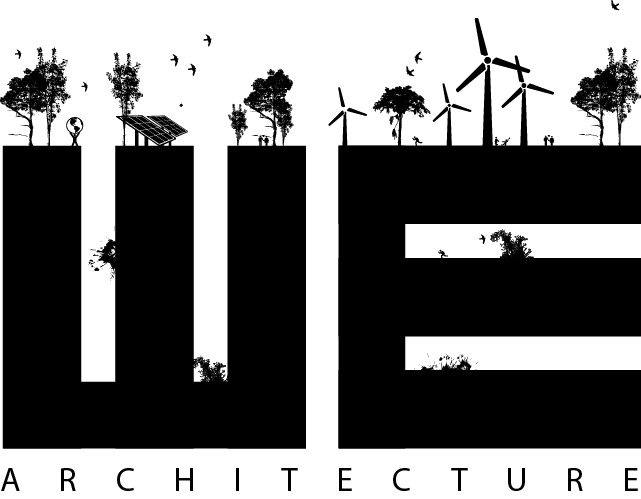WE are developing light-weight, 100% recyclable and biodegradable building module in paper
Every year about 18 hectares of forest – an area the size of England and Wales – is felled to feed the growing demand of wood. In an article from the Guardian in 2017 the latest satellite analysis reveals that the rainforests around the world will most likely be gone within the next 100 years. Latest the Chinese National Sword Policy has tightened the regulations on waste import to China resulting in recyclable waste piling up around the globe, getting incinerated, or, in other cases, sailed to sea and dumped. Simultaneously we are covering the planet with concrete at a pace that would make your eyes go wide. Reports published by CNN and The Guardian have shown that 22 billion tonnes of concrete are produced every year. In comparison, this is more than twice the amount of all plastic produced - ever. It is the second most widely used substance in the world, only surpassed by water. One years’ worth of concrete could cover the entire country of England from cost to cost.
These days we are asking us self at WE architecture whether the building industry can protect our common resources instead of wearing them down. If ambitious architecture can change the building industry for the common good. Our goal is to find an alternative to concrete, using recycled material and basing the construction on cradle to cradle principals.
In October WE Architecture received 200.000 DKK from the Danish Arts foundation (Statens Kunstfond) to develop a construction system based on papier mâché (picture above) in collaboration with an Italian inventor who has developed a new papier mâché method, were recycled paper is treated with state-of-the-art technology making it non-inflammable and water-resistant. The substance can be shaped into an infinite variety of shapes and draws similarities to stone, terracotta, or marble due to the natural variation in color and texture. The ambition is to build a house entirely of recycled wood and paper which is 100% biodegradable, while playing with the extraordinary qualities that the papier mâché material provides.
Today only a little more than 50% of original paper and paper board production is getting recycled, the rest is incinerated or put into landfill [BIR, Recovered paper market 2013]. If we utilize this resource locally instead of sending it around the world, it will result in more local recycling, less rely on virgin pulp and paper, a lower number of trees being cut down and less co2 emission from paper production processes. Paper is a reasonably simple material to recycle, as the infrastructure for collecting the waste is already in place. Furthermore, all paper materials come from the same base – the cellulose fibre. Thus, all products of wood, wood pulp, cardboard or paper can be recycled rather easily into the same base and used for new products. The fibre eventually deteriorates after it is recycled more than 7 times, and, ultimately, the fibre ends its life moulding or turning into ash. This can be put back into the soil, unlike concrete, thereby laying the foundation for a new tree to grow, closing the life circle and creating a closed cradle-to-cradle process.





